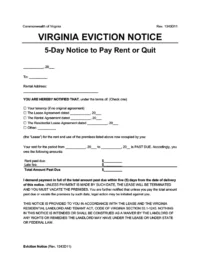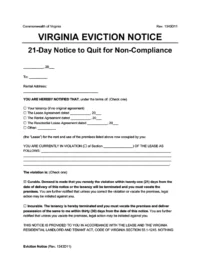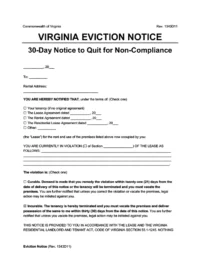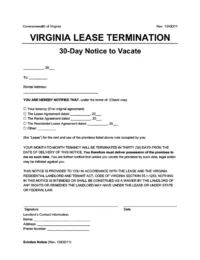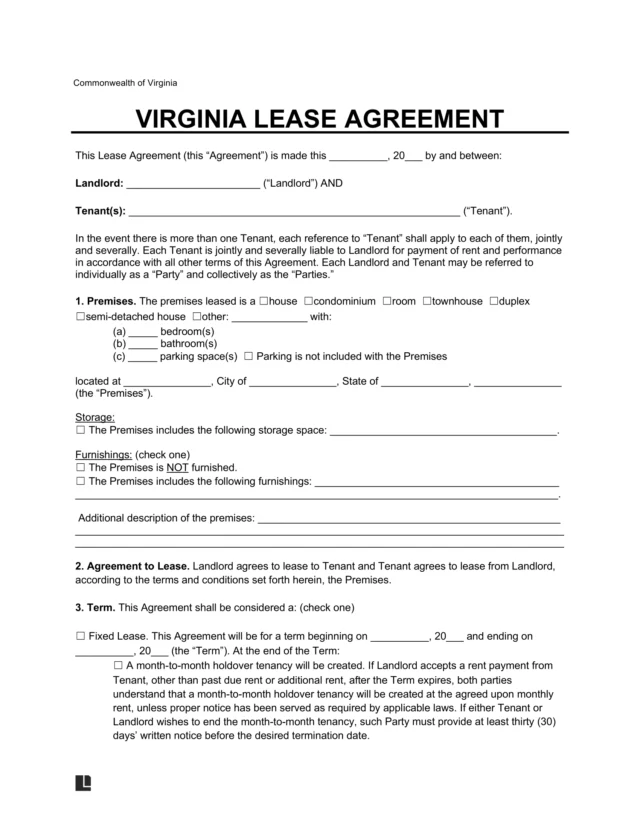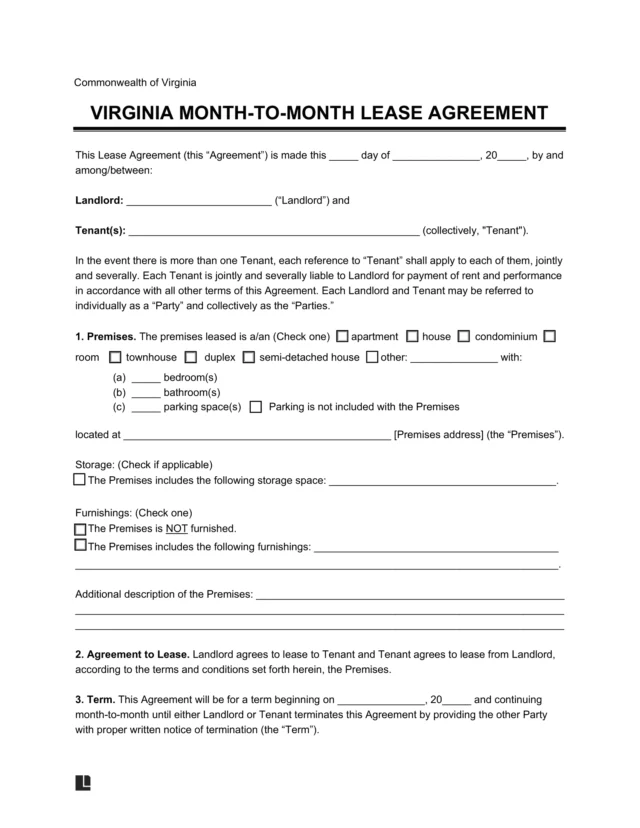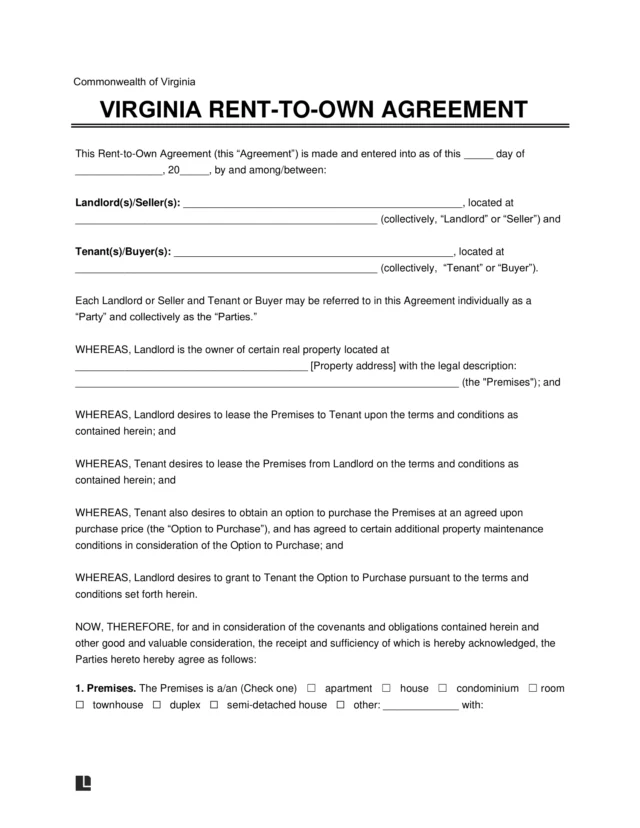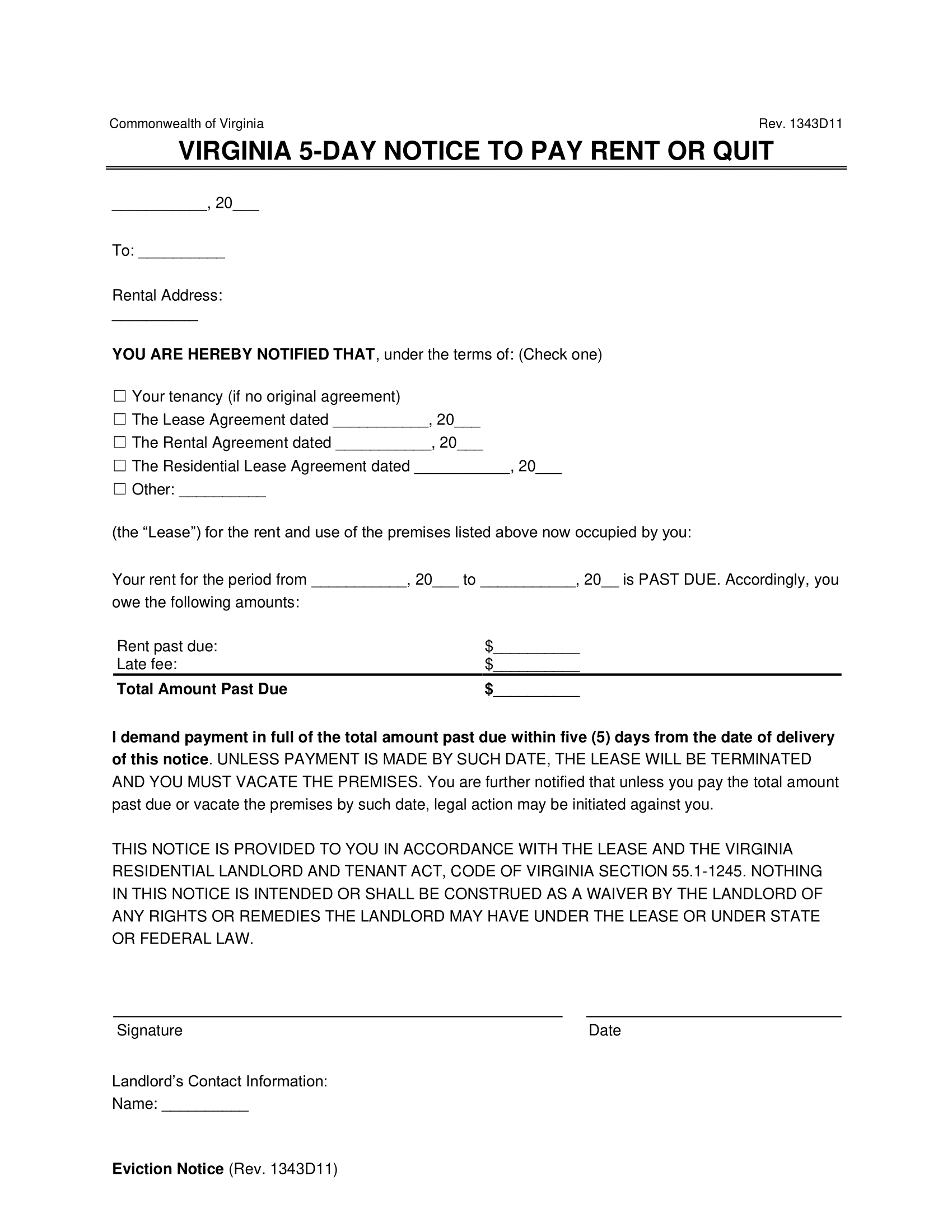Understanding Eviction Notices in Virginia
Virginia landlords must serve tenants with a notice before taking legal action for eviction. The reason, whether it’s late rent or breaking lease terms, determines the notice used.
Use our document editor to create and download a custom Virginia eviction notice in PDF or Word format.
Types of Eviction Notices in Virginia
Virginia provides different eviction notice rules depending on the violation, with timelines adjusted for issues like rent delinquency or serious lease breaches.
5-Day Notice to Pay Rent or Quit
Serve a 5-day notice to tenants who haven’t paid their rent on time. Per VA Code § 55.1-1245(F), tenants have five days to pay their overdue rent or vacate the premises, ensuring you can recover unpaid rent in a timely manner or regain possession of their property.
5-Day Notice to Pay Rent or Quit
Give tenants five days to pay rent before the eviction process can proceed in court.
21-Day Notice to Quit for Non-Compliance
If a tenant commits a curable violation, you can issue a 21-day notice per VA Code § 55.1-1245(A) to allow them to fix it. Some examples of curable offenses include damaging property or hosting too many guests. A tenant can address these violations by making the repairs themselves or ensuring that they abide by the established guest limit for future gatherings.
21-Day Notice to Quit for Non-Compliance
Give tenants 21 days’ notice before the eviction process begins if the lease violation is curable.
30-Day Notice to Quit for Non-Compliance
If the tenant commits a violation that you don’t deem remediable, you can issue a 30-day notice to quit per VA Code § 55.1-1245(C).
If a tenant doesn’t move out before this period ends, they may face forcible eviction via a court order. Note that if the tenant commits a willful or criminal act that affects others’ health and safety, you can terminate the lease agreement immediately and force them to vacate.
30-Day Notice to Quit for Non-Compliance
Give 30 days’ notice before the eviction process begins if the tenant's lease violation is incurable.
30-Day Notice Lease Termination
When you’re ready to end a lease, you must issue 30 days’ notice per VA Code § 55.1-1253(A). If you choose not to renew multiple month-to-month leases, you must provide 60 days’ notice. State law defines multiple leases as more than 20 leases or 50% of the landlord’s leases, whichever figure is greater.
30-Day Notice Lease Termination
In Virginia, landlords must give tenants 30 days’ notice to move out if they’re on a month-to-month lease.
How to Evict a Tenant in Virginia
In Virginia, eviction lawsuits are governed by Title 8.01, Chapter 3, Article 13 of the Code of Virginia.
Step 1 – Deliver the Eviction Notice
To start the eviction process, a Virginia landlord must give the tenant the appropriate notice, depending on the reason.
Step 2 – Wait for the Tenant to Act
If the tenant fixes (“cures”) the problem (if given the option) or moves out within the required timeframe, then no further action is necessary.
Step 3 – File the Initial Court Documents
If the tenant argues against the eviction notice or fails to cure the breach(es), the landlord may file a lawsuit with the Civil Division of the General District Court. To do so, the landlord must file an unlawful detainer action. Once the court receives the document, it will set a hearing date within 30 days.
Step 4 – Serve the Summons
A sheriff must deliver the summons to the tenant. This delivery should occur at least ten days before the hearing.
Step 5 – Attend the Hearing
Both parties and their legal representatives (if applicable) must attend the scheduled hearing. Here, they will present evidence for their cases.
Step 6 – Obtain a Writ of Eviction
If the tenant doesn’t show up or the court rules in favor of the landlord, the landlord can then file a Writ of Eviction and get help from the local sheriff to remove the tenant.
Step 7 – Evict the Tenant
If the court grants the Writ of Eviction, the sheriff will help the landlord remove the tenant from the premises.
Related Court Forms
- Summon for Unlawful Detainer (Form DC-421): This form outlines why the landlord is filing a lawsuit against the tenant and provides information about how the tenant must respond once sued. The landlord must file the form at the General District Court in the county where the property is located.
- Request for Writ of Eviction (Form DC-469): If the landlord wins an eviction lawsuit, the landlord can file this document to request a court to evict the tenant from the premises forcibly. The court will issue the Writ to the sheriff’s office, and a sheriff will then remove the tenant from the landlord’s property. The tenant will have seventy-two (72) hours to leave on before the sheriff forces them out.

